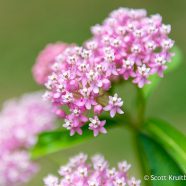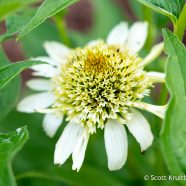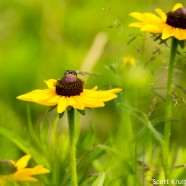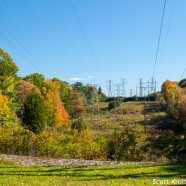Milkweed Flowers
My patch of Swamp Milkweed (Asclepias incarnata) is flowering and looking sensational. While this tasty treat has not had any Monarch butterflies or caterpillars (hopefully just yet) it certainly is attracting all sorts of bees…and that is fine by me! Scott Kruitbosch Conservation & Outreach Coordinator
Read MoreEchinacea Milkshake
Earlier today RTPI Development Director Linda Pierce pointed out to me that it was National Pollinator Week, a fact that escaped my attention – like many of those national days do! Just last week I posted a couple photos of pollinator plants about to bloom for the summer. Unfortunately I have not seen too many species of butterflies or bees thus far in 2016, though I am hopeful this changes after a slow and cold start to the insect season. Coincidentally today I actually saw a couple “firsts of year” butterflies including a Red Admiral in the morning and a Giant Swallowtail...
Read MoreBlack-eyed Susan
It is a beautiful time of the year with July’s grasses and flowers filling every field with treasures like Rudbeckia hirta, or Black-eyed Susan, delighting our insects and sustaining our world. As we embark into August make sure you schedule time to be outdoors this weekend!
Read MoreClover City
So many clovers, so little time! Welcome to summer. Let your grass grow up a bit and see what you can find. The bugs, bees to butterflies, will all appreciate it, and so will our air, your wallet and your back.
Read MorePowerline corridors, plants and wildlife
Powerline corridors, as well as gas and oil pipeline right of ways, are often an unexpected habitat oasis. They cover millions of acres of land in America. They may also provide a tremendous benefit to plants and wildlife that favor scrub or early successional habitat, a type that we do not favor in our development otherwise. Certain bees and butterflies to flowers and birds can all end up winning if these strips are managed properly – limiting mowing, chemicals, invasive plants and so forth. As humans have worked to protect forests we have neglected to do the same for this habitat...
Read More








